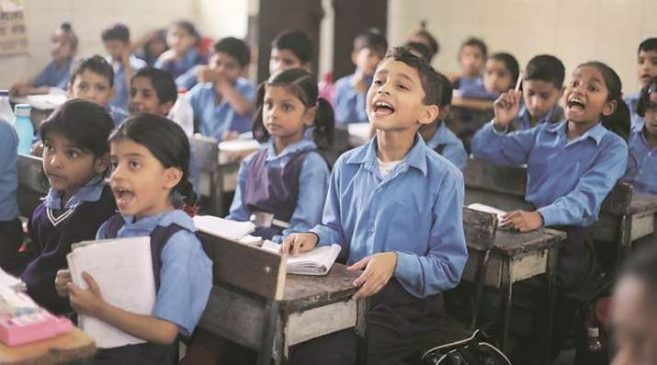NEW DELHI: Taking note of the increase in the enrolment of students in Delhi government schools and the completion of construction of additional school infrastructure, the directorate of education has written to all district education officers to explore the possibility of converting all double-shift schools to single-shift ones.
Currently, several schools are run in two shifts, mornings normally for girls and the evenings for boys. Of the 1030 government schools in Delhi, 429 are girls’ schools, 407 boys’ and 194 co-educational. If all the institutions now opt only to have a single shift, most will become co-ed schools.
A DoE circular sent to the deputy district education (DDE) officers on Friday said, “Keeping in view the increase of enrolment in government schools, all deputy director of education (district) are directed to explore the possibility to convert double shift school to a single shift and also make school-wise plans to shift the students in coordination with the school management committees and parents so that quality of education may be improved. As the construction of additional rooms is nearing completion, the plan to convert the schools from double shift to single shift may be explored.”
According to the data available, students attending the morning shift and single-shift schools have performed better in the CBSE classes X and XII board exams than the evening shift. In 2021, the evening shift had a pass percentage of 99.88% in the Class XII board results against 99.96% and 99.98% for general and morning-shift schools.
The importance of running single-shift schools in Delhi has been periodically highlighted. Almost a decade ago, the committee set up by the National Council for Educational Research and Training for the ‘Development of a Policy Framework for Implementation of the Right of Children to Free and Compulsory Education Act, 2009’ in Delhi had strongly recommended ending the double-shift schooling practice.
The measure is also inspired by examples from other countries, such as Ghana, which implemented a policy to convert all double-shift schools to single-shift ones. A paper published by the University of Oslo determined that the reason behind the Ghana policy decision was to ensure effective and efficient teaching and learning by lengthening the instructional time.
Even in 2019, DoE had drawn up a plan to convert 92 schools into a single-shift system following the construction of new school buildings. The addition of space had resulted in the students per classroom ratio falling to less than 40.





































